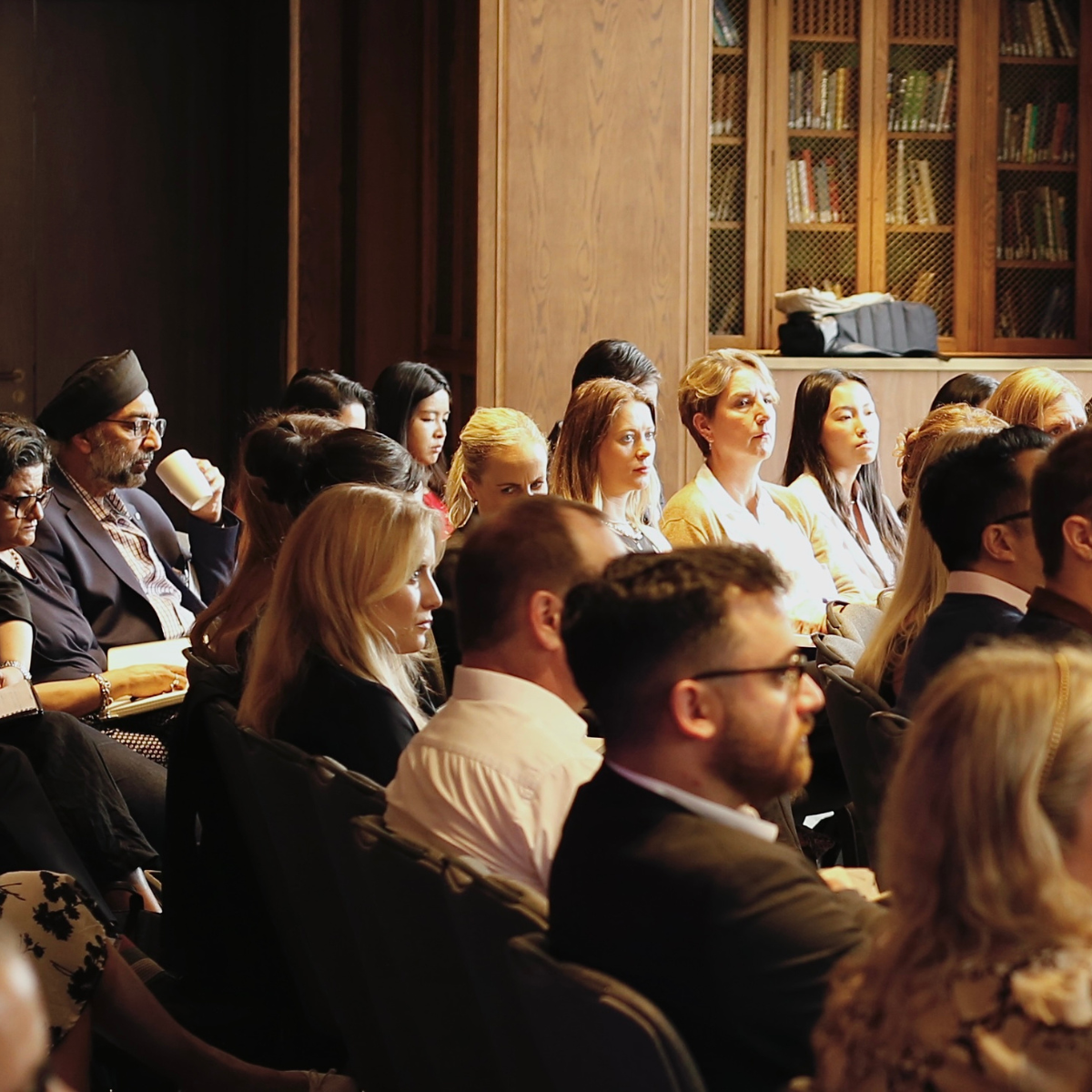During our event, Navigating the Changing World of Work, it was clear that rapid change has brought about a multitude of challenges for HR and Recruitment professionals. Discover our five key takeaways from our insightful keynote speaker, expert panellists, and our engaged audience…
Building culture in our businesses in the changing world of work
Did you know that 1 in 5 employees are lonely every day?
When businesses made the rapid move to a work from home model, in the face of a pandemic sweeping the world, they were grappling with logistical difficulties, human responses to uncertainty, and much more. But perhaps one saving grace was that the cultures and relationships that businesses had already built in-person and were able to borrow from during the early days of lockdown.
During and post-pandemic, however, there was so much change. There were a huge number of redundancies as businesses moved to protect themselves from collapse, as well as the ‘great resignation’ that came later. And, as we have all settled into a world where work from home or hybrid approaches are the norm, there are no longer those pre-established working relationships carrying us through. Young people, in particular, are starting their careers in siloes, and this opens up questions: are they missing out on valuable career opportunities, learning opportunities, and mentorships that they would gain from a greater in-office presence?
Trends have swept across TikTok and other social media channels, such as Act Your Wage, Quiet Firing, Rage Applying, Bare Minimum Mondays, Quiet Quitting, Resenteeism, and many more – all indicating dissatisfaction with the current state of play. We risk sterile, disconnected, and transactional relationships becoming the norm at work unless there is intervention.
Our experts discussed how we can navigate this tricky HR headache. When in-office working mandates can mean that employees are obliged to come to the office but they don’t work collaboratively even when they do, should HR be rebranding these mandates? Perhaps they could be thought of as creativity or collaboration days, providing teams with the opportunity to really connect with each other, rather than working silently side-by-side.
Businesses can attract and retain talent by fostering an environment in which staff flourish and develop. If employees are engaged and fulfilled, they will be more motivated, and this will provide a return on investment in your people.
The CHUI Framework
Ultimately, there are four pillars that can help us to work to improve things, given to us in the form of the ‘CHUI Framework’ by keynote speaker Oliver Pickup.
- Community: foster belonging in physical and virtual spaces
- Health: prioritise physical, mental, and emotional wellbeing
- Understanding: nurture curiosity in order to grasp the deeper complexities of our world
- Interconnectedness: connect different roles to achieve resilient, adaptable, and people-centric businesses that know the broader impact of their work
Businesses are always going to prioritise the bottom line, but investing in their colleagues’ wellbeing goes hand in hand with this – a healthier, happier, more connected workforce is going to lead to employee retention (and its associated cost savings), and a more motivated, productive workforce. We should be looking for these win-wins wherever we can.
What do Labour’s new employment laws really mean for HR departments?
Amongst all the social change within the workplace, there is also soon going to be legislative change. Labour has proposed over 50 law changes, and we’ll see these in a draft Employment Rights Bill which is anticipated to be published before the end of October 2024. For now, most of the debate is on some of the main policy changes in the Labour manifesto, for example the right to claim unfair dismissal from day one of employment. Once all the new laws go live, appointing the right hire the first time around will become even more important.
These changes won’t happen overnight, but it will be interesting to see what they look like in practice. Most businesses currently operate with a probation period, and it is anticipated that the laws will still permit probation periods of up to six months, in which the employer can still terminate with a less stringent process provided that there is good reason to do so. Those first six months are a good opportunity for employer and employee to work as one to discover whether they are a good fit. We’re watching this space carefully to see when these day one rights will kick in, and how…
The liability and ethics of giving references in the UK
Would you feel comfortable giving a bad reference?
When we asked our audience this question, only one person raised their hand. In the UK, culturally we are extremely averse to giving any detail other than the dates of employment.
But where does this leave us from an ethical perspective? Of course, there are always times when it’s just not a good fit. Under those circumstances, it’s best to part ways amicably and wish them well in their next endeavour – this happens sometimes, and it’s often no-one’s fault. But sometimes, individuals may have been embroiled in bullying and harassment investigations, or Health and Safety incidents, that could put their next employer in a difficult position or compromise the safety of employees in their next organisation.
In these circumstances, you may feel ethically obliged to indicate this. Something as simple as stating “I would not be comfortable giving this individual a reference” can say a lot, without placing your business at risk of legal action.
And if you want a bit more detail about your hire, and all their previous employer will provide is their dates of employment, our experts recommended picking up the phone. The candidate may be able to shed some light of their own. Also, ask the previous employer for their views off the record, or enquire if they’d be comfortable giving a reference verbally. We’d recommend sticking to the facts – a good approach might include asking directly if an individual has been involved in disciplinary proceedings during their employment. If the answer is that they wouldn’t be comfortable giving the reference, this likely provides you with a steer as to their performance or behaviour.
How can we ensure best screening practices in a globalised world?
A huge part of the onboarding process in many industries is the screening stage. An important factor in any recruitment strategy, it’s an opportunity to make a great impression on your candidates – which means it’s paramount to get it right and guide them through the process.
So what does best practice look like?
Perhaps the most important part of ensuring success in screening is partnering with our clients and working in close collaboration. We have to acknowledge as a global business that ‘one size fits all’ is not the right approach. Particularly in Client and Candidate Services, knowing how to balance global policies in organisations with local realities, regional intricacies, and cultural context is something that we at Accurate lovingly call a ‘glocal’ service: global capabilities, with a local approach.
It can be as simple as tailoring Candidate communication differently to the country, language, or culture we’re working within. To stay compliant, you may run the same set of checks for most of your hiring locations, but the language, instruction and guidance for your applicants may differ. You could be more direct and prescriptive with many central European countries, and communication should start sooner in the process, as this helps manage expectations. On the contrary, in many English-speaking countries, there is an expectation of more pleasantries and less directness in communication. Emotional intelligence is required to humanise your recruitment strategy and operate effectively on a globalised scale.
But it’s not just your communications that should be considered when you’re rolling out a global recruitment policy. There’s a balance to be struck between maintaining fairness and consistency across the board in all locations where running a criminal or employment check might be deemed controversial, or even out of line with local data protection laws or interpretation. Here, we partner with our clients and create ‘round tables’ with regional representatives for labour and employment law, recruitment, and HR to see how to best apply checks in-region. This might mean finding alternative approaches, such as substituting criminal checks with adverse media checks. Or, where criminal records are not provided to third parties, we might be able to source certificates directly from Candidates.
Changing the world of work by humanising the onboarding process
Another way to make the screening and onboarding process as comfortable as possible for candidates is to carry it out with as much speed as possible, whilst not compromising on quality on behalf of our clients.
Everyone wants instantaneous results, but we are often met with archaic institutions like regulatory bodies which don’t give clear instructions or leave space for interpretation. Applying complementary solutions, such as Konfir, helps achieve both. It allows us to collect a database confirmation of a candidate’s previous roles, which can enable conditional employment; thereby giving them the green light to start their new job, while references in a fuller format are sourced from previous employers directly.
These innovative products can be applied to a wide range of industries and populations, and from our conversations with organisations in, for example, the security sector, we’ve heard the numbers: candidate uptake sits at 90%, with a turnaround time reduction of 75%. This combines automation and finds efficiencies while respecting global and regional regulations, and not cutting any corners.
It’s safe to say that HR and Recruitment professionals have faced a huge number of challenges, brought about by rapid cultural and technological changes over the past few years. This event allowed us to look at the opportunities before us from regulatory, human and logistical perspectives, and bring industry professionals together to support one another in navigating the perpetually changing world of work.



